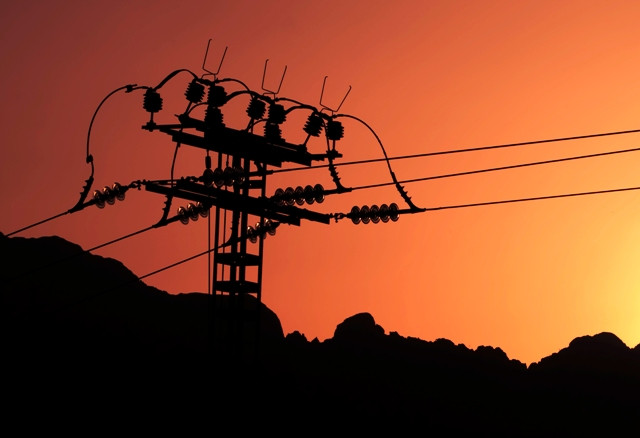Power generation hits 4-year high in April
Electricity output surges 22% YoY, 25% MoM but FCA turns positive after 10 months

Pakistan's power generation in April 2025 surged to 10,513 gigawatt-hours (GWh), reflecting a robust 22% year-on-year (YoY) and 25% month-on-month (MoM) increase — the highest monthly generation recorded in the past 48 months, according to data published by the National Electric Power Regulatory Authority (NEPRA). "Power generation in April'25 surged by 22% YoY, highest in 48 months, to 10,513 GWh," wrote Arif Habib Limited (AHL). Despite this sharp rise, generation remained broadly aligned with the regulatory reference level, helping produce a positive Fuel Cost Adjustment (FCA) for the month, the first since June 2024.
"Shift to expensive fuel mix resulted in the first positive FCA after June 2024," said Research Head of Optimus Capital, Maaz Azam.
The uptick in generation is largely attributed to soaring electricity demand, spurred by rising temperatures and reduced reliance by industries on captive power generation. Analysts believe the shift was also influenced by lower grid tariffs, which made national grid electricity more attractive compared to captive sources. "The rise in generation is attributed to increased demand, driven by a reduction in tariffs," said Research Head of AHL, Sana Tawfiq.
Cumulative power generation during the first 10 months of the fiscal year 2025 (10MFY25) reached 100,661 GWh, showing a marginal decline of 0.4% YoY from the same period last year.
In terms of source-wise contribution, hydropower (hydel) led the mix with 2,306 GWh (22% share), up 11% YoY, followed by re-gasified liquefied natural gas (RLNG) at 2,157 GWh (21%) and nuclear at 1,882 GWh (18%). A notable highlight was the 59% YoY growth in local coal-based generation, which rose to 1,540 GWh, supported by increased utilisation and favourable fuel costs. Conversely, generation from imported coal and natural gas declined by 32% and 26% YoY, respectively, reflecting deliberate cost-cutting and fuel optimisation strategies. Wind and solar energy maintained a combined share of 9.2%, consistent with seasonal patterns, while residual fuel oil (RFO) re-entered the generation mix with 83 GWh at a steep cost of Rs28.77/kWh.
From a policy perspective, a significant development in March 2025 was the imposition of a Rs791/mmbtu levy on gas-based captive power plants (CPPs), raising their effective gas tariff to Rs4,291/mmbtu. According to estimates by AKD Securities, this translates into a staggering generation cost of around Rs42/kWh for off-grid captive units operating at 35% thermal efficiency. This steep cost differential prompted many industrial users to switch to relatively cheaper grid electricity, which averaged around Rs28/kWh (excluding taxes and duties).
While the fuel cost of power generation rose by 8% YoY to Rs9.92/kWh in April 2025, driven by a heavier reliance on expensive fuels like RLNG and RFO, the average cost of generation actually fell on a MoM and YoY basis. It dropped to Rs8.95/kWh, down 5% YoY and 8% MoM, compared to Rs9.75/kWh in April 2024reflecting improved fuel mix efficiency and lower reliance on imported fuels.
According to Optimus Capital Management, the total generation of 10,513 GWh in April was slightly below the reference level of 10,550 GWh, a shortfall of just 0.4%. However, changes in the fuel mix were stark. Hydel power dropped by 28.6% versus its reference (3,228 GWh), while coal-fired generation soared by 48.6%, with imported coal usage jumping 115.1% and local coal rising 22.5%. Meanwhile, RLNG generation grew by 42.1%, and nuclear generation fell by 22.3%.
The cost impact of this fuel mix shift was significant. RLNG's contribution to fuel cost jumped to Rs4.98/kWh, up from a reference of Rs3.31/kWh. Local and imported coal together contributed Rs3.30/kWh, while nuclear (Rs0.38/kWh) and hydel (zero marginal cost) remained low-cost contributors. The net result was a positive FCA of Rs1.27/kWh, calculated against a reference fuel cost of Rs7.68/kWh. This marked change in fuel mix, particularly the increased reliance on RLNG and coal, alongside stable generation levels, led to the country's first positive FCA adjustment in 10 months, a noteworthy development for both consumers and the broader energy sector.





















COMMENTS
Comments are moderated and generally will be posted if they are on-topic and not abusive.
For more information, please see our Comments FAQ